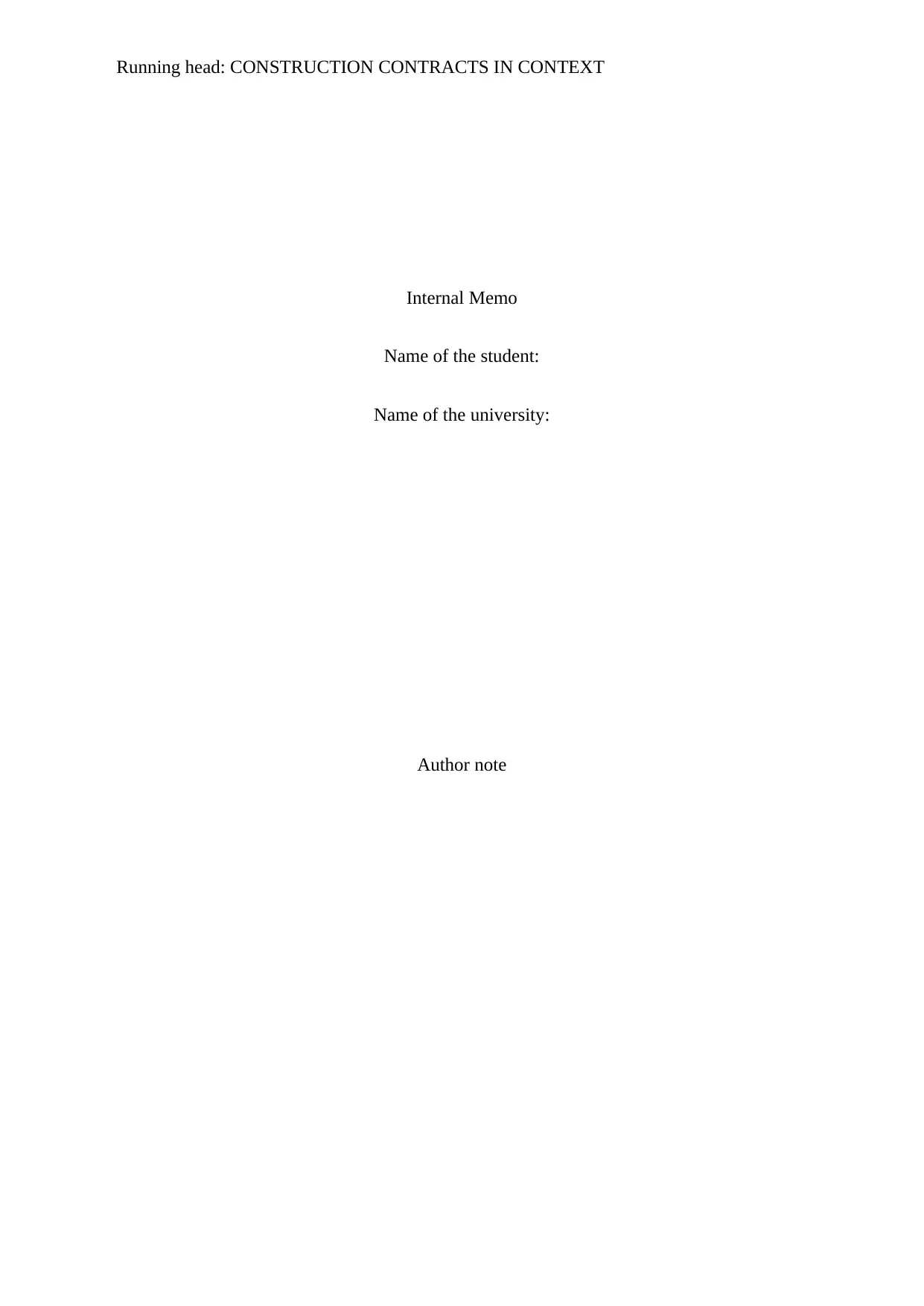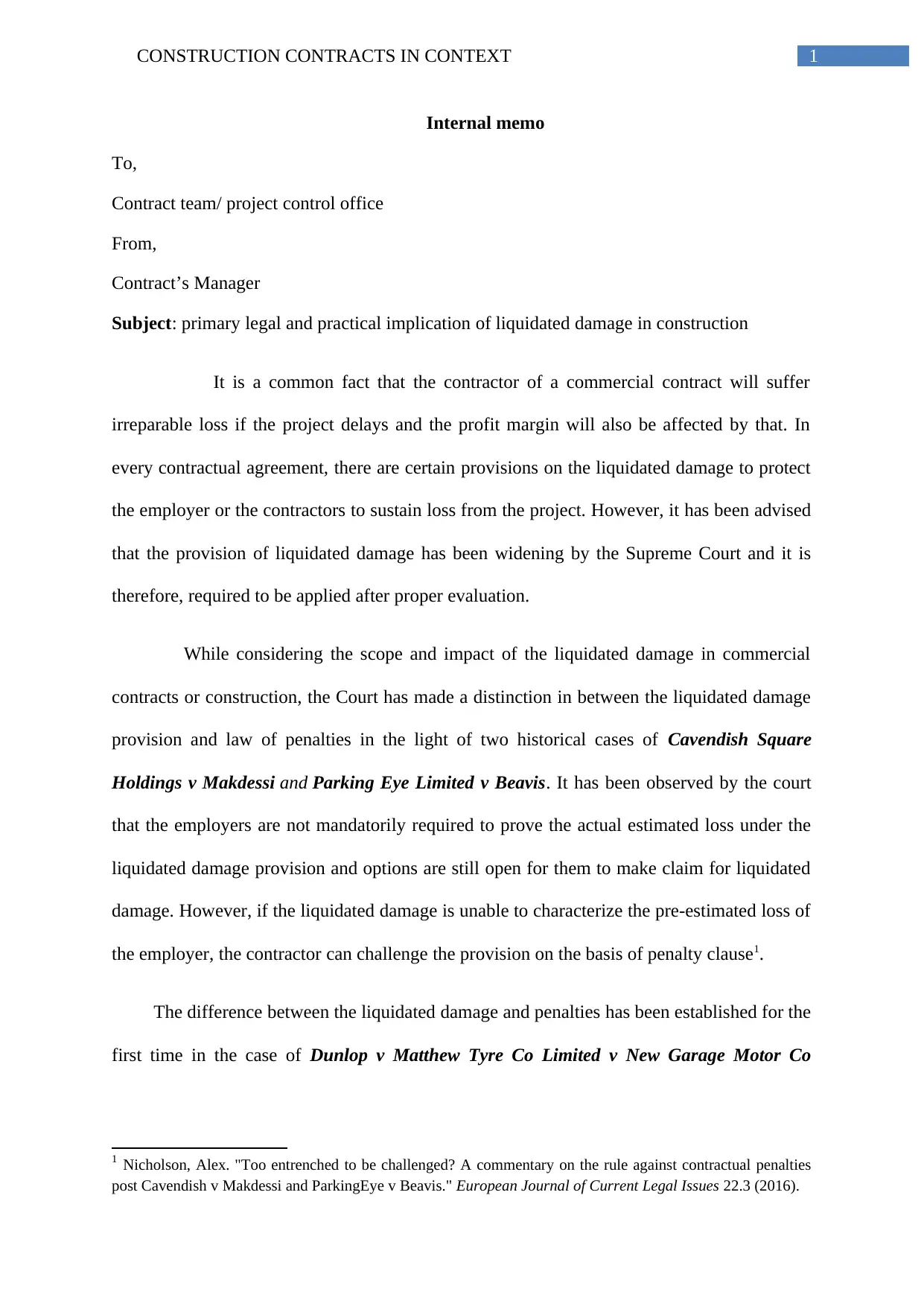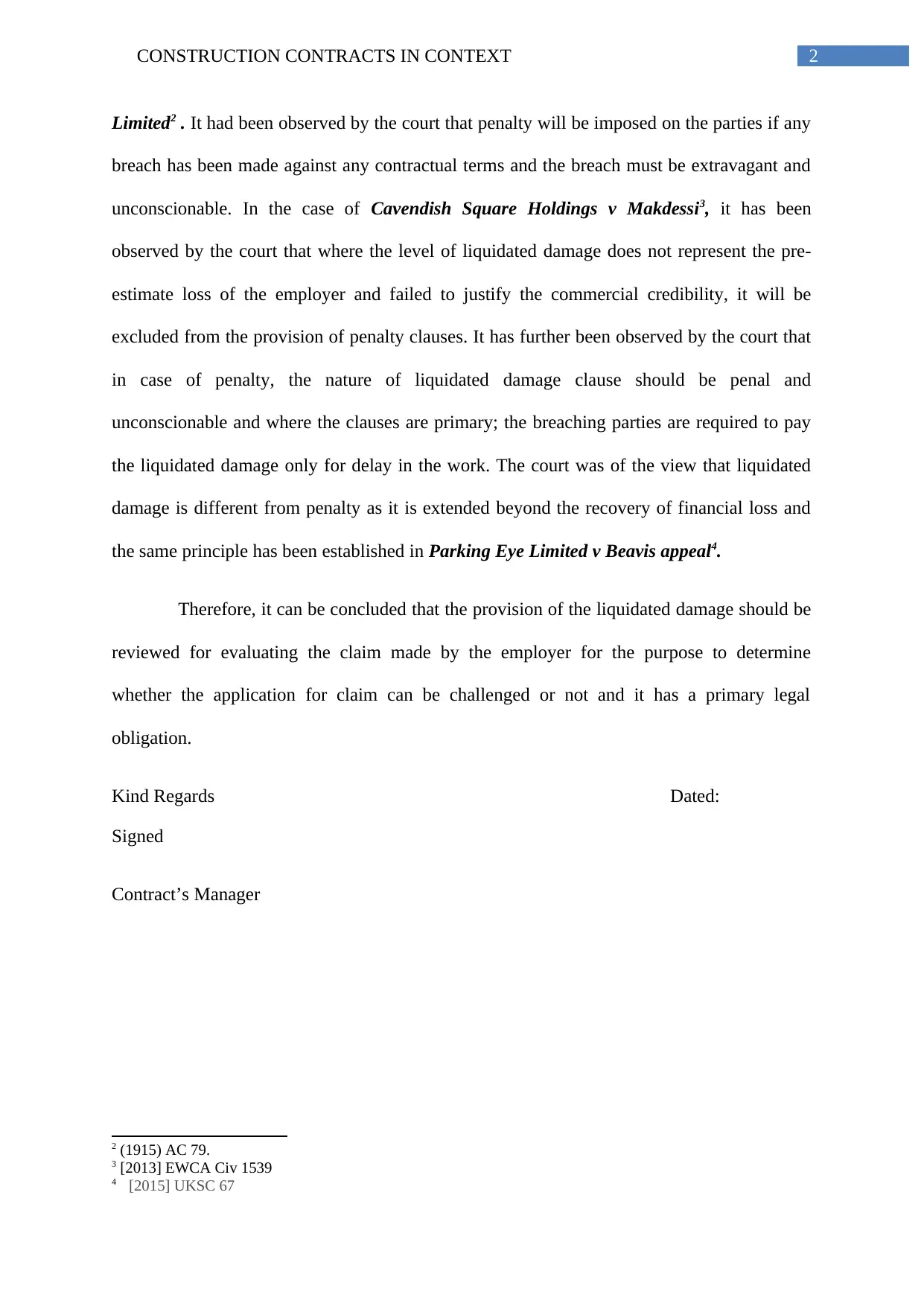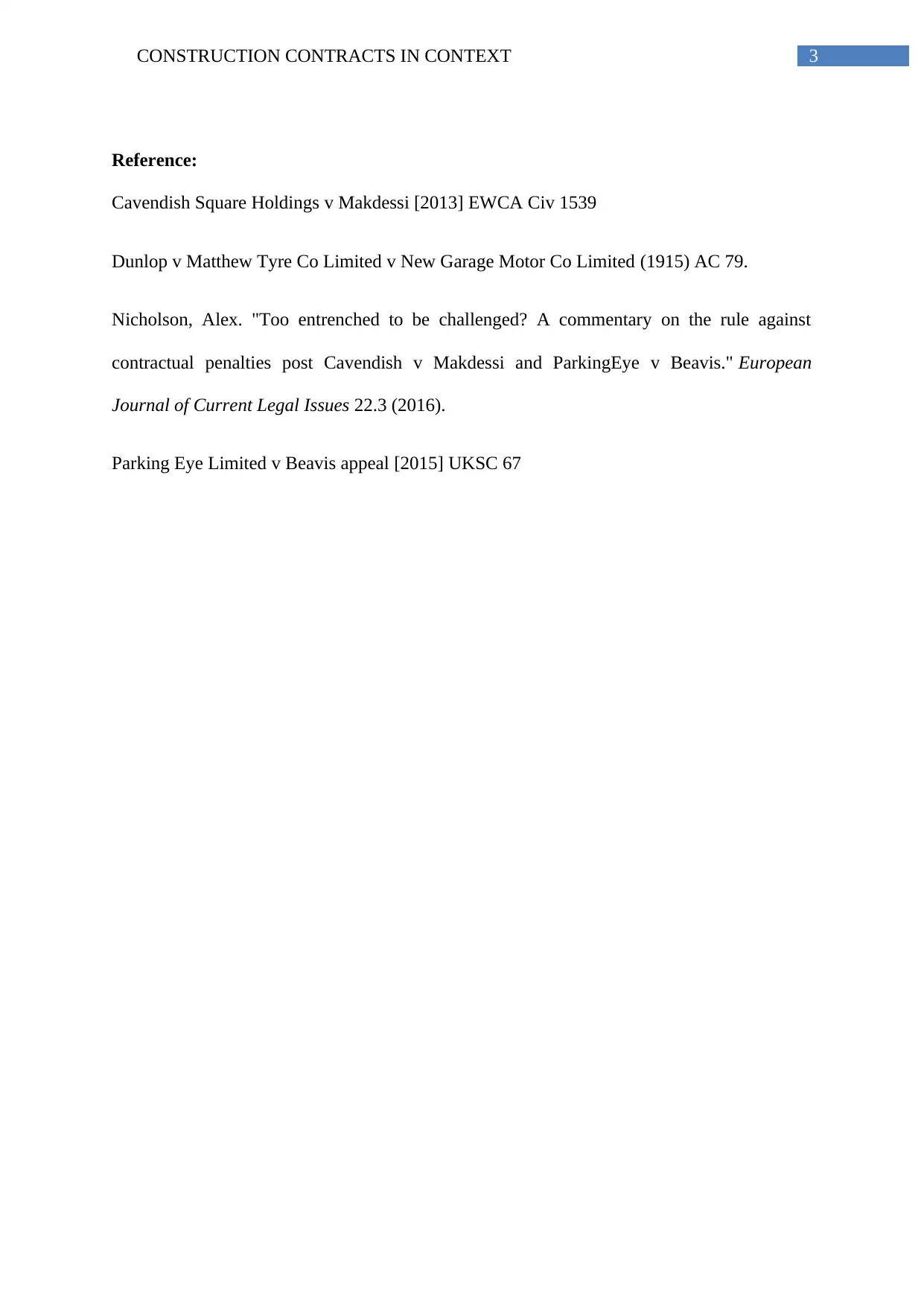Exploring Liquidated Damages: Implications in Construction Agreements
VerifiedAdded on 2023/06/15
|5
|684
|424
Report
AI Summary
This report provides an internal memo discussing the primary legal and practical implications of liquidated damages in construction contracts. It highlights the distinction between liquidated damages and penalties, referencing key cases such as Cavendish Square Holdings v Makdessi, Parking Eye Limited v Beavis, and Dunlop v Matthew Tyre Co Limited v New Garage Motor Co Limited. The report emphasizes that while employers are not always required to prove actual estimated loss under liquidated damage provisions, contractors can challenge the provision if it fails to represent the pre-estimated loss or is deemed a penalty clause. The analysis underscores the importance of reviewing liquidated damage provisions to evaluate the validity of claims and determine whether they can be challenged, framing it as a primary legal obligation.
1 out of 5












![[object Object]](/_next/static/media/star-bottom.7253800d.svg)